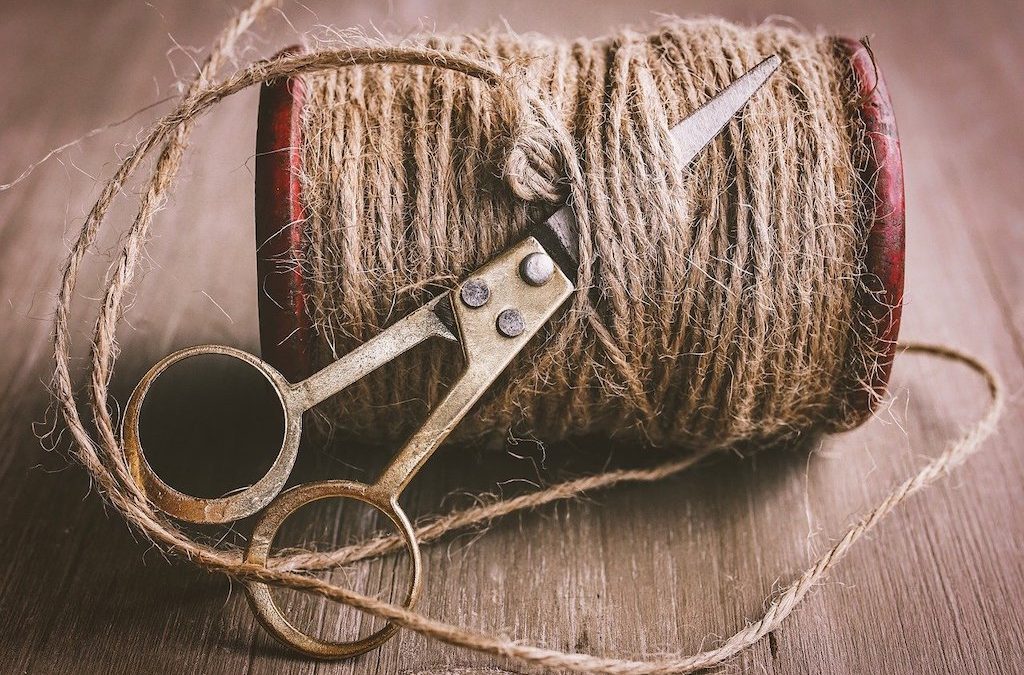
Fiber Plants
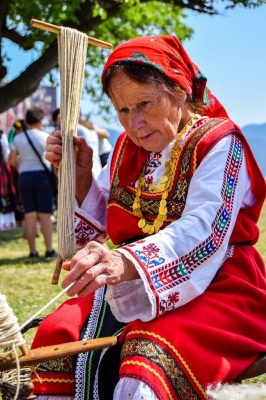 Deep within the womb of the earth mother, beneath the roots of the cosmic World Tree ‘Yggdrasil’, lies the abode of three old wise women. Known as ‘the Norns’, which means ‘the fates’, they govern the thread of life: Urd (Earth) spins it, Verthandi (Becoming) measures it, and Skuld (Fate) cuts it. No-one, not even the gods, can overrule them. Every soul that enters the world receives their personal thread. And with that, they are equipped and ready to weave their own little patch of the tapestry of life.
Deep within the womb of the earth mother, beneath the roots of the cosmic World Tree ‘Yggdrasil’, lies the abode of three old wise women. Known as ‘the Norns’, which means ‘the fates’, they govern the thread of life: Urd (Earth) spins it, Verthandi (Becoming) measures it, and Skuld (Fate) cuts it. No-one, not even the gods, can overrule them. Every soul that enters the world receives their personal thread. And with that, they are equipped and ready to weave their own little patch of the tapestry of life.
‘We are the weavers, we are the web’
Many traditions consider spinning and weaving sacred activities. The Kogi Indians, for example, who live in the Sierra Nevada of Colombia, have a most intricate cosmology. They pass it on by weaving its symbolism into their cloth.
The art of spinning is a meditative act. As they twist and roll a mass of fibers into smooth thread thoughts and prayers are meshed and entwined with the yarn. In Kogi cosmology, spinning is a sacred act that aligns the inner order with that of the universe. The spindle represents the equivalent of a ‘lingam-yoni’ symbol, the male and female aspects of the universe, joined in an act of creation. The wooden shaft represents the Axis Mundi that connects heaven with the underworld. The disk at the top, called ‘the whorl’, symbolizes the world itself. The Kogis imagine the Sun-God as a ‘transcendental weaver’, who weaves the tapestry of life on his cosmic loom. The four corners of the loom represent the equinoxes and solstices, which mark the cornerstones of the year. Every year he weaves two pieces of cloth, one for himself and one for his wife, the Moon.
Coded messages
All over the world, weavers encode the symbols of the old mysteries and weave them as patterns and symbols into their fabrics and clothes. Textile designs often convey very specific messages about the social role of the wearer, their ancestry, and their marital status. In other words, it reflects one’s place in the world.
Thus, fiber plants play a hugely important role. They are not merely a material resource or commercial crop but as the stuff with which we ‘weave the web of life’. In such a cosmology, humans beings are co-creators of the cosmic design and we shape our world accordingly.
Ancient beginnings
It is not known when humankind first learned how to extract fibers from plant materials and to spin them into yarn. But archaeological evidence suggests that weaving and spinning can be traced back at least 5000 years. Egyptians mummies were wrapped in sheets of linen and we know that even the Neolithic lake dwellers of what is now Switzerland already cultivated flax. Hemp was used in China at about the same time.
What exactly is a Fibre?
Fibers are structural elements of a plants’ anatomy. One could say, they are the equivalent of our connective tissue. They give them strength, support, and resilience to withstand the wear and tear of wind and weather.
All plants has fibers, but not all of them are suitable for producing yarn. Most are too short or too brittle. Some are just right but can be difficult to extract. Processing fibers to make yarn is a lengthy and complicated process.
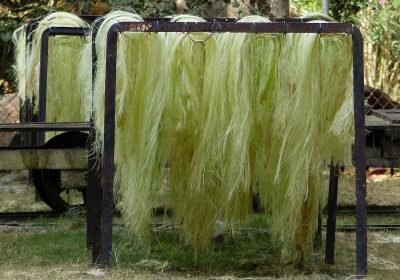 Collecting the plant material
Collecting the plant material
The first step is to collect plenty of suitable plant materials. Tall, herbaceous plants such as stinging nettle or hemp work well. Their fibres are long and not too brittle. Harvest takes place when the plants are at the peak of their development.
Retting
The next step is to separate the fibers from the decomposable plant matter. This is done by a process known as ‘retting’. To prepare the plants, the leaves and stalks are stripped off and discarded.
The remaining stalks are then cracked and submerged in water until the non-fibrous parts rot away.
The retting procedure varies slightly, depending on the specific source plants. Once the soft parts have rotted away the fibers are left behind. They must be washed, ‘combed’ and thoroughly dried before they can be processed further .
The rise of synthetic fibers
The discovery of oil brought in a new era of synthetic fibers that made natural fibers too work-intensive and expensive to compete. By now they have become ‘luxury items’! We don’t spare much thought on all the ingenious methods that our ancestors have developed in order to keep warm. But, in recent years, we are re-discovering the advantages of natural fibers: they can be grown sustainably, ddo not depend on oil and are biodegradable. They also make fabrics that ‘breathe’, which means, less sweating.
Natural fiber products are also used as an important source of insulation material that regulates indoor temperatures’, can ‘breathe’ and is non-toxic.

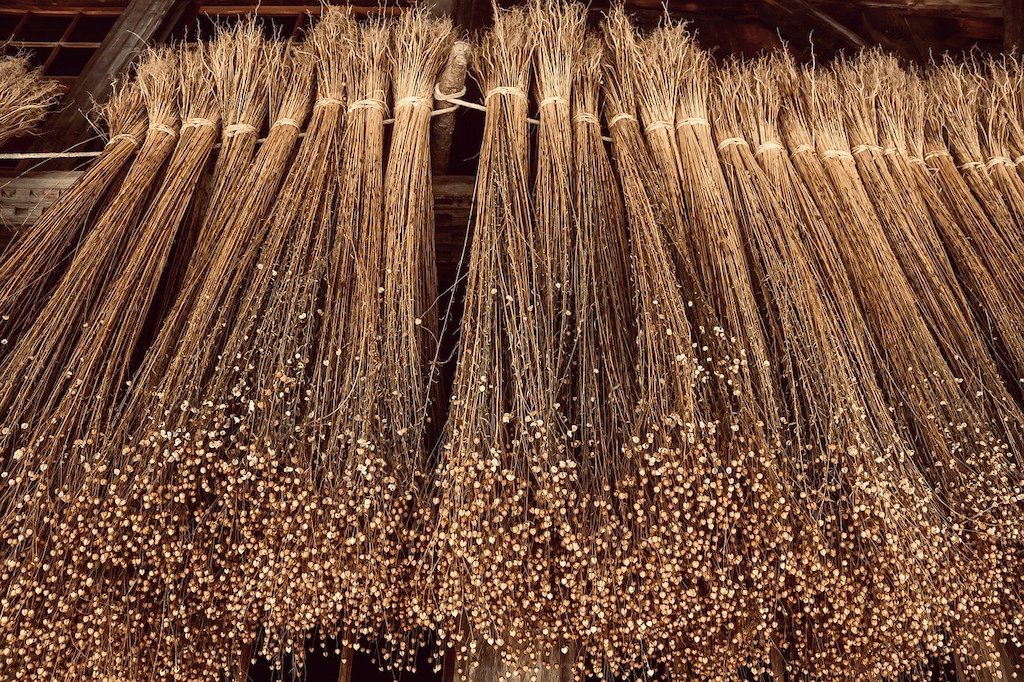
Flax (Linum usitatissimum)
Flax or linseed is the source plant of linen. It is one of the oldest fiber plants known to humankind. Flax likes a mild, somewhat humid climate. In the past, it was grown as far north as Scotland and as far south as Egypt, where flax shrouds were used to cover the mummies.
The plants are retted to extract the fibers. These must then be cleaned and brushed before they can be spun into a yarn. Flax fibers are very long and do not break easily. Instead, their resilience increases when they are wet. The quality of the yarn varies widely. It may be spun into an almost silk-like thread or, left coarse, it can be used for making canvass or carpet backing. Natural linen is buff to grey colored and can be bleached in the sun. It does not dye easily, as the fiber is hard and naturally resistant. Bleaching deteriorates its quality, reducing its strength and weight. Linen appears stiffer and harder than cotton and wrinkles more easily, which may be why it has gone out of fashion. However, linen conducts heat better than cotton, making garments feel ‘cooler’. Its smooth texture resists dirt.
See also: Flax – Linum usitatissimum
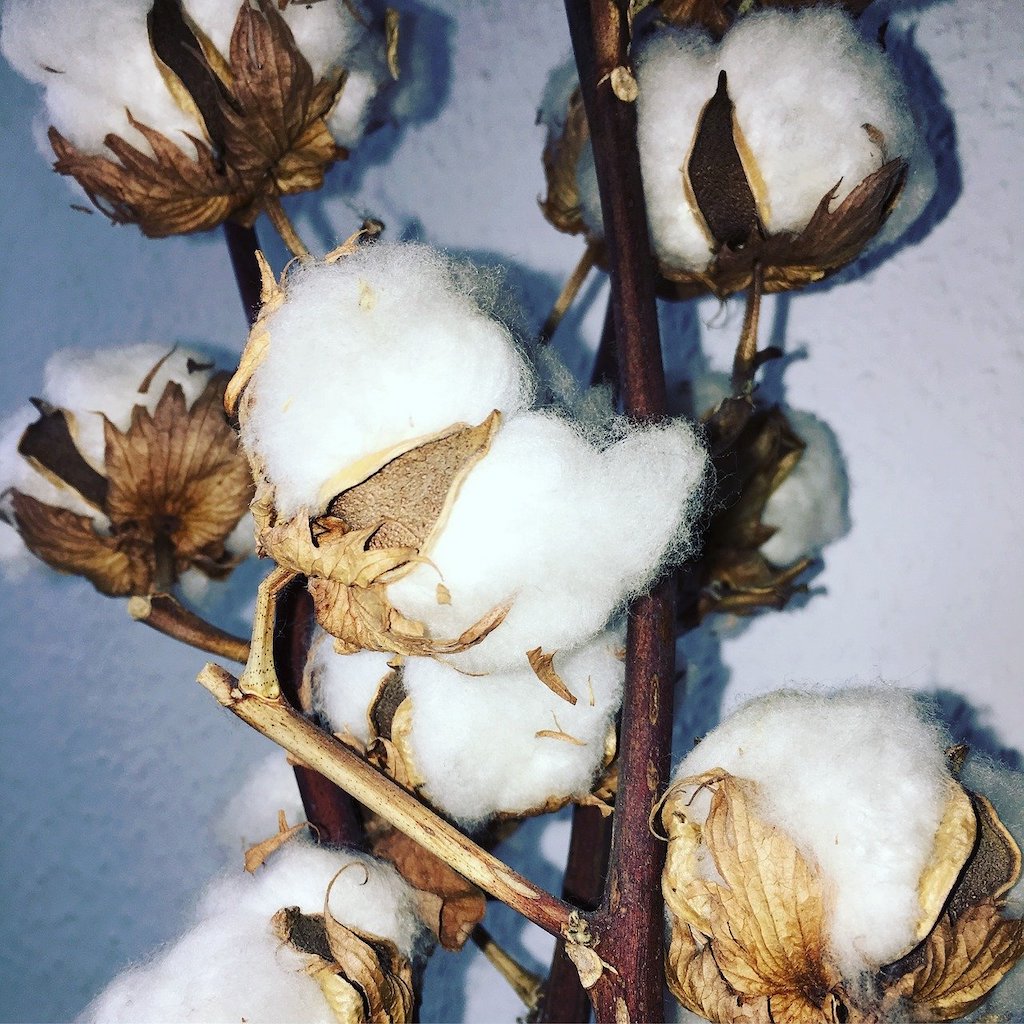
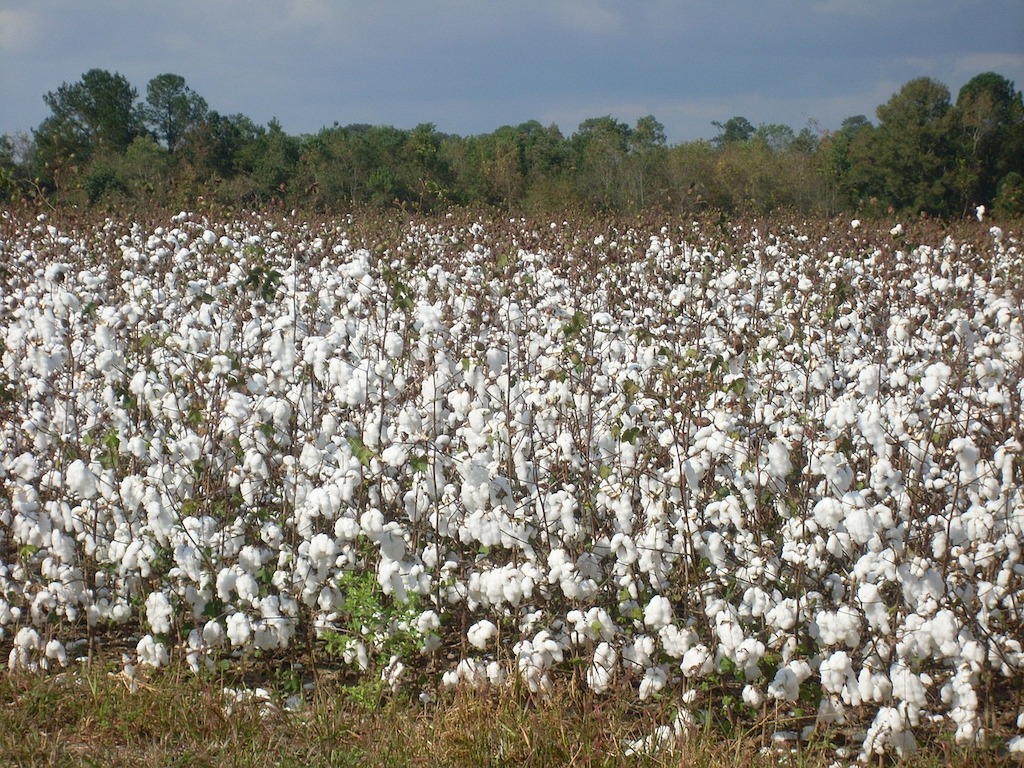
Cotton (Gossypium hirsutum)
Cotton is still the most important fiber plant of all. I mention it separately because it is a story of its own. Cotton derives from various species of Gossypium, and belongs to the Mallow family. Unlike the other fiber plants discussed above, its fibers do not derive from the stem but from the seeds, which grow inside a capsule known as a ‘boll’. The seed is surrounded by a soft, fluffy material called ‘lint’, which consists of fibers that can easily be spun into thread.
Cotton is a tropical crop of enormous commercial importance. It has also been at the center of the dark and ugly business of the slave trade and all the pain and misery and injustice that it entailed.
Cotton is very productive and lucrative, but also a very labor-intensive crop to grow. The invention of the ‘cotton gin’ (cotton engine), made the process much easier. A cotton gin is a machine that automatically separates the cotton fibers from the seeds, which made the whole process far more efficient. Today, cotton processing, including the picking, is largely done by machines.
Cotton has become problematic in other ways, though. The plants are highly susceptible to numerous bugs, which means that they are subject to intense agrochemical treatment. Cotton is in fact one of the most heavily sprayed crops (8-10 times per season): 25% of the world’s insecticides and more than 10% of the pesticides (including herbicides, insecticides, and defoliants.) is sprayed on cotton. The intensive industrial crop production also depletes the soil which means, more agrochemicals in the form of fertilizers are needed to compensate.
In recent years, disease and insect-resistant Gene-manipulated varieties have been created, which are now taking over the original chemically dependent varieties. In the US, a huge proportion of cotton is now produced by GM varieties. Deceptively, these cotton varieties are hailed as environmentally friendly, because they supposedly do not need so many chemicals. However, trial plantings of GM cotton in India and Indonesia have failed to prove resistant to insects. Meanwhile, consumers are beginning to become more aware of these issues and are looking for eco-friendlier alternatives. Organic and fair trade cotton is now available, but have to compete against other natural fibers that are easier to produce without the chemicals.
See also: Cotton
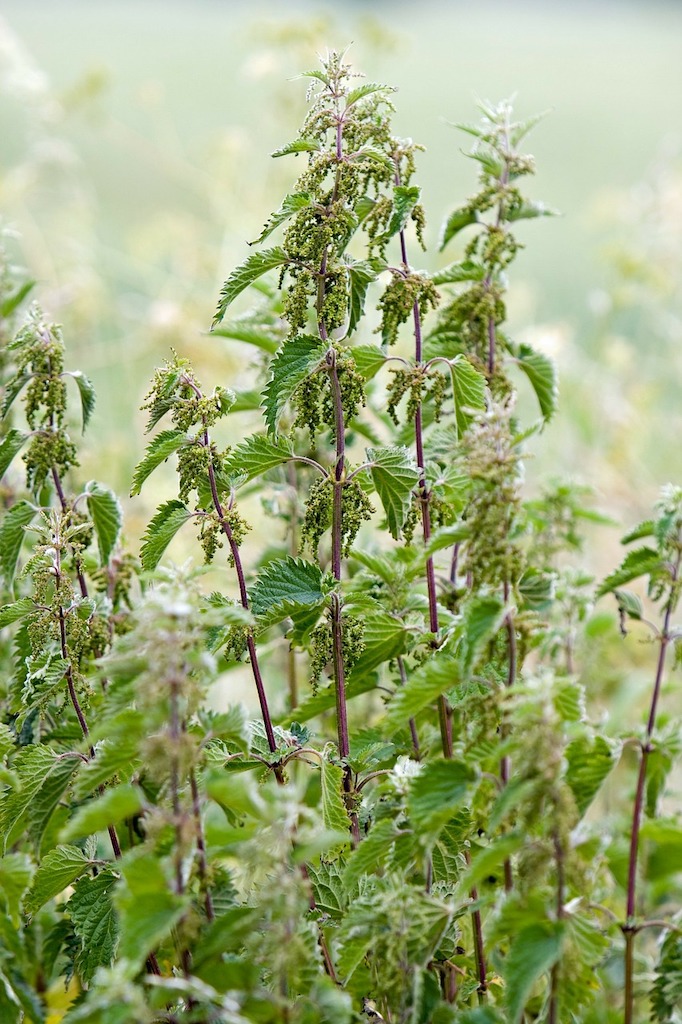
Stinging Nettles (Urtica dioica)
The common stinging nettle is another traditional fiber plant, although most people only know it as a troublesome weed. Its long resilient fibers have long been used to make cloth and garments. But as a source of fiber, they have gone through several cycles of popularity. The last time nettle was ‘in fashion’ was during WWII, when cotton became scarce in Germany.
After the war, interest in nettles as a fiber plant has waned in favor of cheaper synthetic fibers. But like Hemp, nettles have also started to make a come back as people are looking for more natural textiles. While hemp and flax fibers are tougher and more hardwearing, nettles produce the finest quality yarn. Currently, Nettles are again under experimental cultivation in Germany. The plants are resilient enough not to need any chemical treatments or fertilizer. In fact, no chemicals at all are used in the processing and the end product is a very soft, silky textile that is immensely resilient to wear and tear.
Nettles thrive on nitrates and can be used to ‘clean’ over-fertilized land. However, most people, including many farmers, consider nettles a bothersome weed and are few willing to grow it. Yet, that might change once they ‘cotton on’ to the fact that under EU regulations it is the only crop permitted to grow on subsidized ‘fallow land’.
In an effort to increase yields, a team of Italian, Austrian and German researchers have joined forces in order to produce new, high-yield varieties of nettles and to come up with solutions that would make the retting process less time consuming and more efficient. Famous Italian fashion houses are ready to launch new lines of fine quality designer nettle knickers and other fashionable items – all they are waiting for are steady and sufficient supplies of nettle yarn.
See also: Stinging Nettles
Jute (Corchorus capsularis and C. olitorius) and Kenaf (Hibiscus cannabinus)
These two members of the Mallow family produce a strong, but coarse fiber. Jute is mostly used for sacking and carpet backing. The fiber is not as strong as hemp or flax and is susceptible to rot. It can not be spun into a fine grade yarn and thus does not find use in the textile industry.
Kenaf, a close relative of Jute is mostly used in the manufacture of paper, although in Africa, where it is native, it is also used for making rope and rugs. It loves hot and humid climates, but is adaptable and will grow as far north as southern Illinois. However, in cooler climates, its seeds do not mature. Kenaf is a very viable and sustainable alternative to Pine used for paper production. Considering that every American consumes about six 30-year old pines in paper per year and the per-acre yield of Kenaf is 3-5 times higher than that of Pine, Kenaf is the obvious environmentally-friendly choice. Kenaf is resistant to most bugs and may be grown organically. It also takes less energy to pulp and does not require chlorine for bleaching. The quality of the paper produced from it is very high.
See also:
Ramie (Boehmeria nivea)
Ramie is also a member of the nettle family. It is sometimes called ‘the flax of the east’ as it is most common in parts of Russia and Eastern parts of Asia. When woven into fabric its qualities are much like flax in terms of luster and strength. It also creases easily and has a similarly smooth texture. Ramie textiles are particularly renowned for keeping their shape well, but it is not a very flexible fiber, which makes it prone to breaking, e.g. in crease-folds. Unlike flax, it takes well to dyes. Fine quality Ramie fabric has a silken appearance. It is usually blended with cotton to create mixed-material garments. Ramie’s disadvantage compared to other fiber plants is the fact that it needs to undergo a chemical process in order to remove a gummy substance from the fibers. On the other hand, it is extremely productive and can sustain between 3 and 6 harvests a year, depending on weather and growing conditions.
See also: Ramie
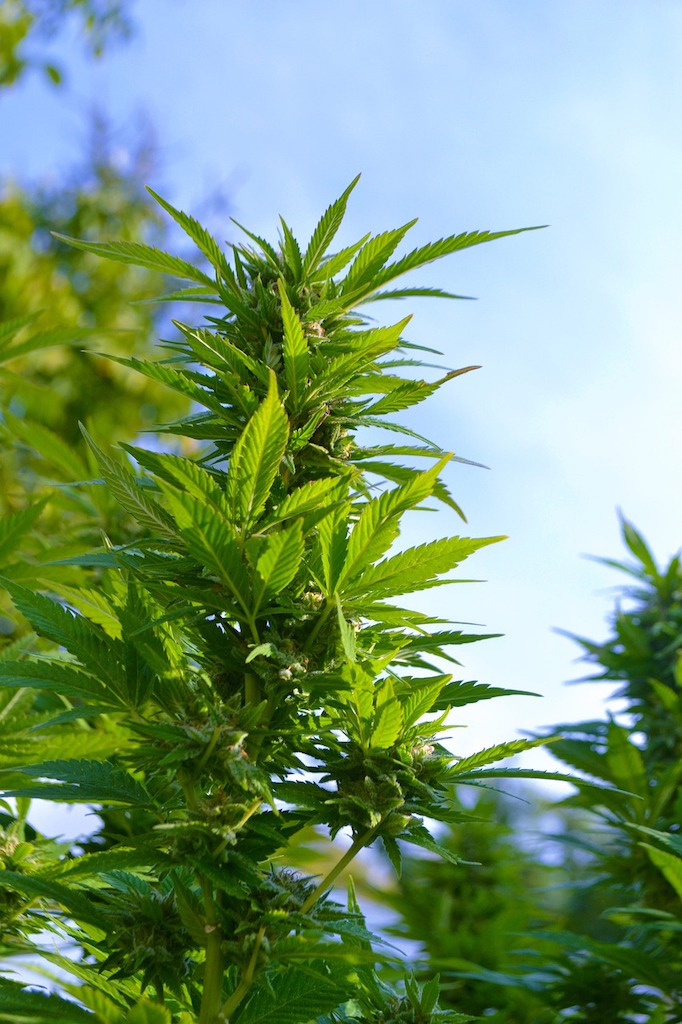

Hemp (Cannabis sativa)
A book could be written about the virtues of this invaluable plant that has served humanity for at least 7000 years. In fact, several excellent books have been written about it, but I will limit myself here to its value as a fiber plant. Hemp has the longest, toughest, and most resilient fibers of any plant, making it particularly useful for tough ropes and canvass that must withstand great pressures, wear and tear. Like Jute or Flax, Hemp is an annual plant. It is not fussy as regards growing conditions and actually, it benefits the soil. Until recently (even during WWII) it was widely cultivated throughout Europe, the United States, China, and India. However, since approximately the middle of the last century, it has come under fire because of its psychoactive properties. Cannabis (sativa var. indica) contains THC, a psychoactive resin. However, the fibers of this subspecies are too short, so it is never used for making yarn. Fiber hemp (Cannabis sativa) on the other hand, does not produce any significant amounts of THC. Yet, this confusion has been used to rationalize the suppression of commercial-scale hemp production. As a result, plastic and artificial fibers have proliferated – as we now know, to all our demise. At last, we are becoming more aware of the negative impact of plastics on the environment and it is high time that we switch to natural, sustainable and bio-degradable sources of fiber.
To extract the fibers, the stem, which can grow up to 4m tall, is stripped of all the leaves and branches. When planted closely together the individual plants don’t grow as high, but the resulting fibers are of a finer quality, better suited for making garments.
Hemp is an ideal fiber plant, not just for hard-wearing rope or material, (the first jeans were made from hemp), but also as a source of fiber pulp for the paper (the first dollar notes were printed on hemp paper). It is inexcusable that in this day and age, when deforestation is a massive threat to biodiversity and exacerbates global warming, forests, including old-growth forests, continue to be cut down for the sake of ‘throw-away’ commodities, such as paper and even toilet paper when hemp would be the logical alternative. Thankfully, Hemp is beginning to make a come-back.
See also: Hemp
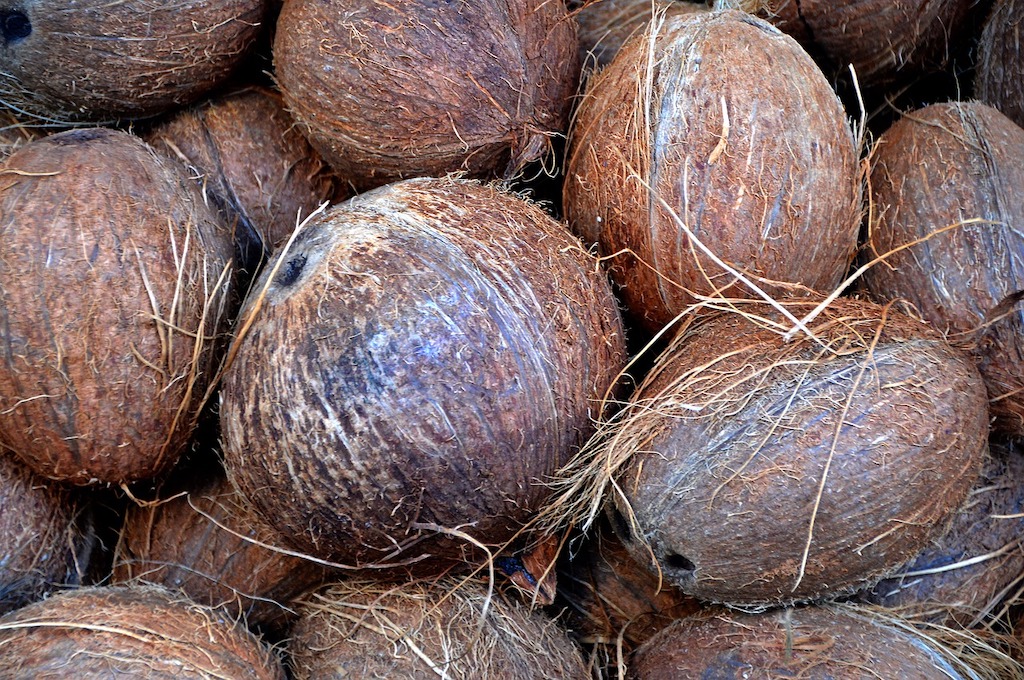
Coconut (Cocos nucifera)
Nobody knows exactly where Coconuts originated, but it is thought likely that they spread from the West Pacific. By now it has become a true world traveler that has colonized all hot, tropical coastal regions of the world. Coconuts can travel very long distances since they are resistant to saltwater. The waves carry them across the sea to distant shores.
Wherever they grow, Coconut trees have been revered as a source of food, oil, medicine, and fiber. Coconut fiber is derived from the husks of the nuts, which are harvested both green (unripe) and brown (mature). Both types are available throughout the year since each nut takes 12 months to mature and the tree flowers and fruits continuously up to 13 times a year. In Thailand and Malaysia harvesters have trained small monkeys to help them with the task of getting the nuts, a practice that is now considered unethical.
The unripe green nuts provide a softer more pliable type of fiber than the brown, fully mature ones. Brown Coconut fiber is quite coarse. It lends itself to be used as a hard-wearing flooring material, upholstery, mattresses, brushes, and sacking. White coconut fiber is used for rope and cordage. Coconut fiber is the only natural fiber that is resistant to seawater.
See also: Coconut
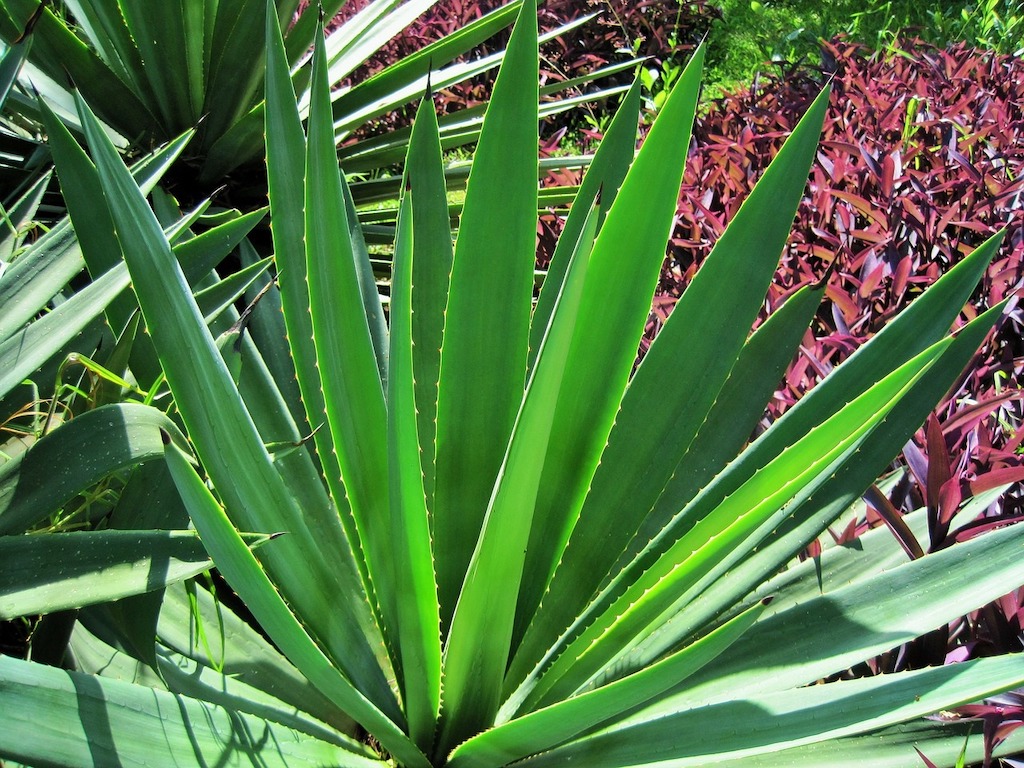
Sisal (Agave sisalana)
Sisal is a hard-wearing fiber derived from a species of Agave that is native to Central America and Mexico. Agave sisalana is a sterile hybrid, which suggests that it has long been used as a fiber plant in Central America. Its exact origin is not clear though Agaves are native to Central America. Its name derives from the port town of Sisal, in the Yucatan, from where it was first exported. Today it is grown not only in Mexico but also in China, Brazil, and Africa, with Tanzania being the world’s largest producer.
Agaves are succulent desert plants with long, fleshy, blue-green, sword-like leaves that grow in a rosette formation on a short stumpy stem. The fibrous sheath surrounding the inner xylem of the leaves yields the fibers. Sisal is not as resilient as other fibers and can deteriorate quickly during processing. The leaves are harvested by hand and are quickly decorticated as the leaf pulp is washed away. Sisal is ideally adapted to arid growing conditions. It is used for matting, rope, netting, or blended with wool to make carpets, etc.
See also: Agave sisalana (PROTA)
Outlook: future uses of fiber plants
While this article discusses fibers mostly in terms of textiles, a new and exciting use of natural fibers is emerging, in the automobile industry, of all places. Some of the leading car manufacturers are beginning to heed what Ford discovered almost a century ago – natural fibers can make a damn good car. They are not only used for the obvious – upholstery of seats and covers but also as filling materials and to replace other parts currently made from plastic or glass. A ‘bio’ plastic is already being produced from Kenaf and Hemp.
There is a lot of scope for utilizing sustainably produced natural fibers that could make a huge contribution to reducing our emissions and preserving forests. There are as yet unimagined and exciting possibilities in the world of natural fibers and I for one am certain that they will play a crucial part in readjusting the natural balance for a sustainable future.

